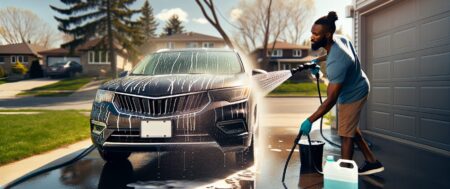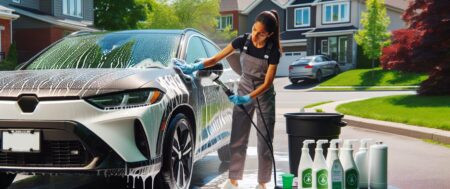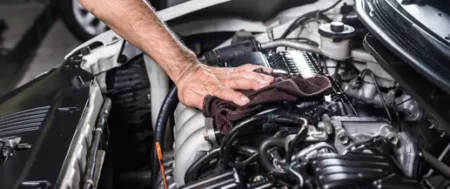The perfect shine is the Holy Grail of detailing. For over a century, professionals have sought a magical solution — a long-lasting product that enhances shine while repelling dirt, environmental contaminants, and rain to maintain extreme gloss in the long term. Something that shines longer than wax so you don’t need to re-apply every month. The solution? Ceramic coatings.
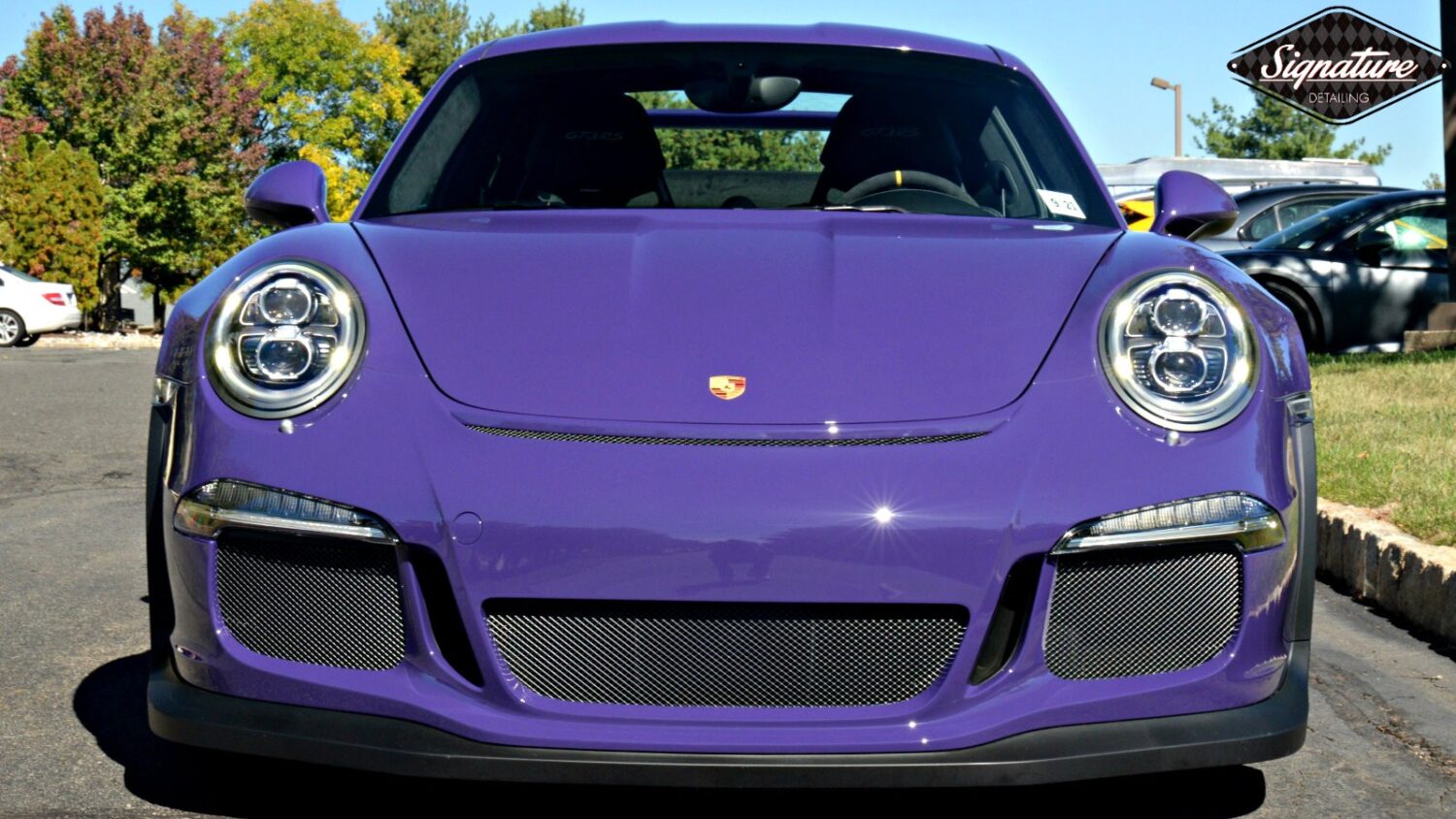
WHAT ARE CERAMIC COATINGS?
Ceramic coatings are liquid solutions that fuse with the paint’s clear coat finish to form an invisible, microscopic, glossy, long-lasting barrier that repels water, contaminants and in some cases even chemicals and UV rays. They preserve and protect the appearance of a defect-free paint finish while enhancing the gloss past what polishing alone can achieve.
When a ceramic coating is applied to a vehicle’s clear coat, the coating bonds with the finish to form a nanostructure that is fused with the clear coat. It is this nanostructure that provides the amazing protective properties a ceramic coating applies. This nanostructure is made of polymers. Polymers are collections of molecules that are bonded together. When a coating is applied, the polymers form a crosslink bond that fuses with the clear coat to form the nanostructure. So instead of sticking to the clear coat like a weak wax would, a ceramic coating literally becomes part of the clear coat, making it exponentially more durable. In fact, these bonds are so durable, only a machine buffer can remove them. Wax and sealants, on the other hand, can be easily removed with chemicals — that’s very weak!
HOW ARE THEY “CERAMIC”?
Brands often describe their coatings are often described as “ceramic”, “glass” or “quartz”. Obviously people aren’t coating their cars in porcelain—so what do people mean by these terms? Well, glass and quartz are usually marketing terms to refer to ceramic coatings. And what does the “ceramic” in ceramic coating mean? “Ceramic” refers to “nanoceramics”, ceramics made from nanoparticles. Nanoceramics don’t have the same rigidity or brittleness of macroscale ceramics. These nanoparticles are what forms the nanostructure of a ceramic coating. A decade ago, ceramic coatings couldn’t last more than a few years due to the limitations of SiO2. But with the introduction of incredibly durable silicon carbide coatings, coatings can now last over a decade. Often coatings will be made of a mix of ceramic nanoparticles rather than just one to achieve unique protective qualities.
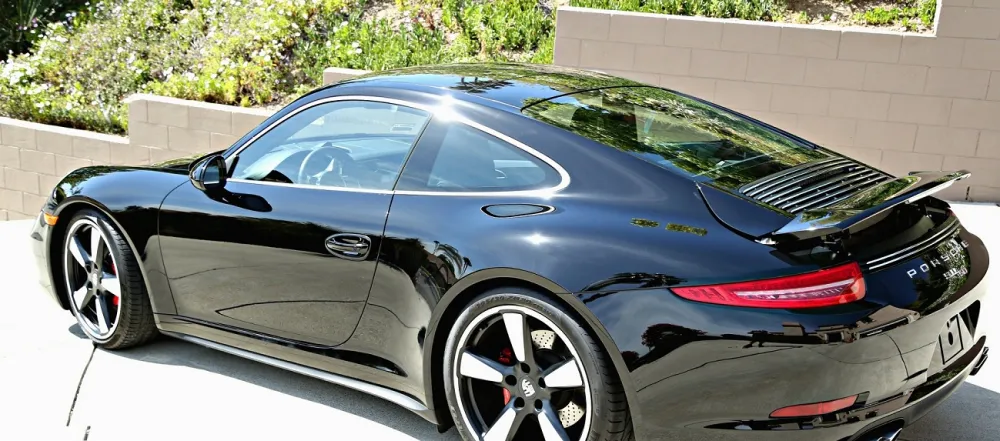
WHAT WILL A CERAMIC COATING PROTECT AGAINST?
Ceramic coatings first and foremost protect the glossy appearance of a vehicle’s paintwork. They do this by preventing and resisting tiny scratches. Any time an unprotected vehicle is touched, minor scratches called “wash marks” are created. These scratches accumulate over time, eventually creating a pattern of scratches in the finish commonly referred to as “swirling”. This can occur during washing and drying. Touching the paint with heavy pressure (like aggressive rubbing to remove a stubborn stain) will scratch the finish even more. As these scratches build up, the finish’s gloss dulls. When this happens, only a paintwork correction with machine buffing can revive the shine, and that’s not something you want to be doing more than once a year. (More info on this in a future blog.)
So how do ceramic coatings protect against these scratches? First, ceramic coatings resist contaminants, which makes a vehicle much more easy to clean. When a vehicle is easier to clean, you don’t need to touch the finish as much to remove contaminants while washing, which reduces the amount of “wash marks” you’ll see. Second, ceramic coatings are also hydrophobic, which makes a vehicle much more easy to dry. Easy drying means less towels touching the finish, which also reduces “wash marks”. Ceramic coatings are also very slick, making them resistant to abrasion itself, which in turn means they won’t scratch as easily as a bare clear coat would. All this resistance combines to prevent as many scratches as possible, ensuring a long lasting shine.
That’s just the baseline for a ceramic coating. Some ceramic coatings also have UV-inhibiting properties, which helps to resist the color fading and hazing caused by prolonged exposure to harsh sunlight (referred to as oxidation). Some even have chemical resistant properties, which helps prevent damage to the finish caused by acidic insect remains baking in the sun. The best ceramic coatings go beyond all of this — they can actually self-heal fine scratches!
DO CERAMIC COATINGS REQUIRE MAINTENANCE?
They do! In order to maintain a ceramic coating’s strong contaminant resistance and water repellency, contamination must be removed on a semi-regular basis. Otherwise, a layer of contamination will eventually build up on the surface and block the coating’s protective properties. In some cases, a coating’s water repellency can also decrease regardless of contamination. In these situations a ceramic reinforcement treatment is applied to revive the water repellent effect and restore any ceramic material that has worn away.
#cars #calgary #cleaning #carwash #canada #ceramiccoating #appointment #alberta #carwash
We accept the following payments Methods: Debit, Credit card, E-transfer, Cash.
Call/text us for booking:
🌐 www.macdetailz.com
🕹 4335 Manhattan Rd SE, Calgary, AB. T2G 4B1.
☎️ +14034029804


